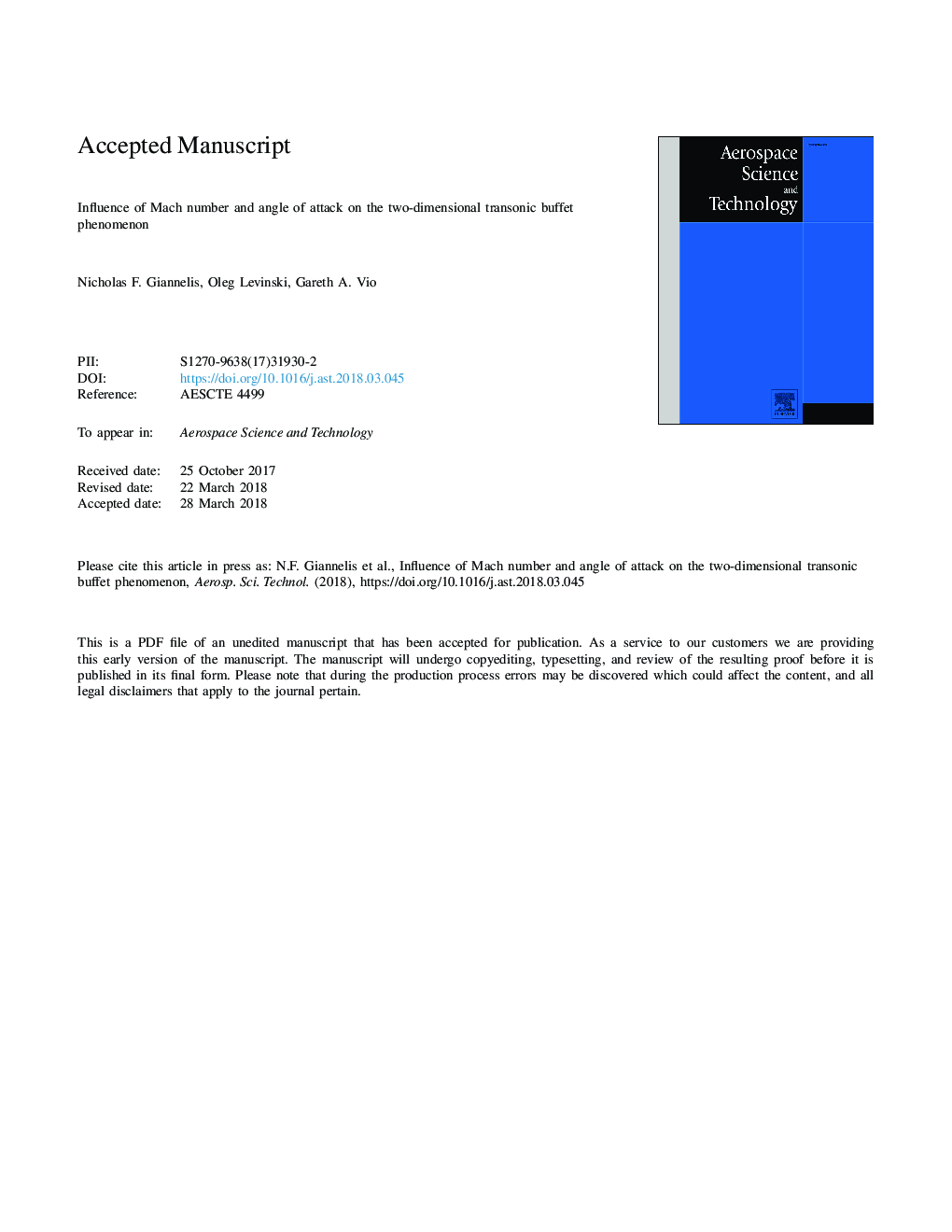| Article ID | Journal | Published Year | Pages | File Type |
|---|---|---|---|---|
| 8057475 | Aerospace Science and Technology | 2018 | 18 Pages |
Abstract
Within a narrow band of flight conditions in the transonic regime, self-sustained shock oscillations that involve the interaction between shock-waves and intermittently separated shear layers may develop. This phenomenon, known as transonic shock buffet, limits the flight envelope and is detrimental to both aircraft handling quality and structural integrity. In this investigation, numerical simulation of transonic shock buffet over the OAT15A aerofoil is performed to explore the buffet envelope. Unsteady Reynolds-Averaged Navier-Stokes simulations are validated against available experimental data to ascertain the most effective combination of simulation parameters to reproduce autonomous shock oscillations. From the baseline test case, the influence of Mach number and angle of attack on the nature of the buffet response is investigated. Radial Basis Function surrogate models are developed to represent the variation of buffet amplitude and frequency with flight condition. While the frequency is found to increase monotonically with both parameters, variation in buffet amplitude through the region of shock unsteadiness is more complex, particularly at high angles of attack. This is related to a bifurcation in the behaviour of the shock. As incidence increases from onset, the shock dynamics transition from periodic oscillations over the suction surface to quasi-periodic motions, whereby the shock is propelled forward into the oncoming flow during its upstream excursion.
Keywords
Related Topics
Physical Sciences and Engineering
Engineering
Aerospace Engineering
Authors
Nicholas F. Giannelis, Oleg Levinski, Gareth A. Vio,
